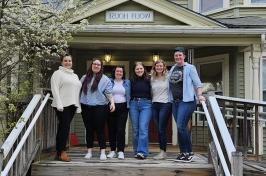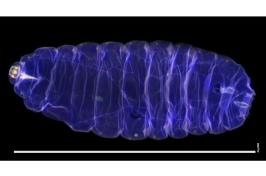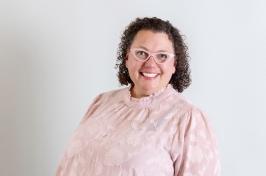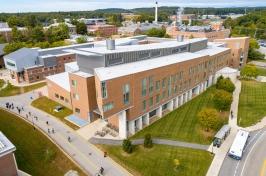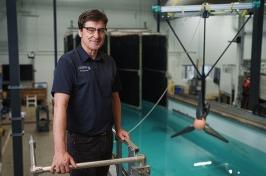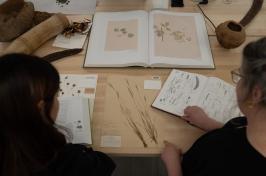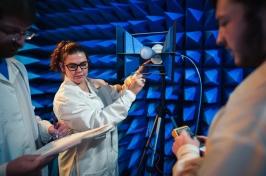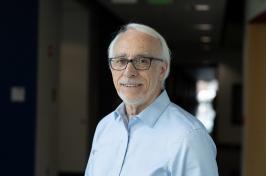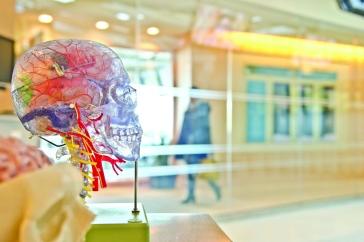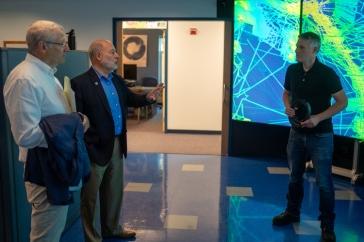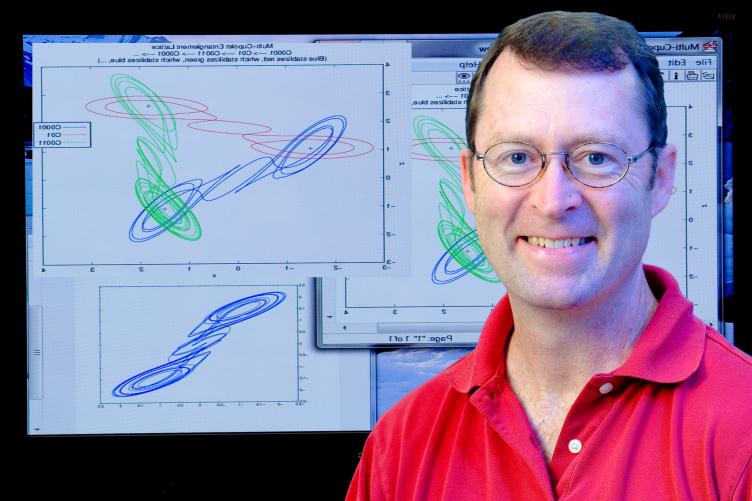
UNH math professor Kevin Short
Academic research leading to innovation with tangible health, 经济或其他生活质量效益被视为工程与物理科学学院的理想模式.
在学院里,也许没有比数学教授凯文·肖特(Kevin Short)更适合开创这种模式的人了, 在2014年美国国家发明家学会(National Academy of Inventors, NAI)院士入会仪式上,他的创新精神得到了认可. 颁奖典礼于3月19日至20日在帕萨迪纳的加州理工学院校园举行.
“我们很高兴看到Kevin在UNH所做的创新工作得到了认可," said Sam Mukasa, dean of the College of Engineering and Physical Sciences. “凯文是我们学院最早将奖学金与创业公司或与行业合作进行研发相结合的模式的实践者之一."
NAI因在专利和许可等领域对创新的杰出贡献而获得提名, innovative discovery and technology, significant impact on society, and support and enhancement of innovation. 肖特因其创新记录而被UNH提名,其中包括九份美国发行的专利.S patents and additional patents pending.
肖特作为一名发明家,在音频和音乐行业得到了广泛认可. 2010年,他在修复伍迪·格思里(Woody Guthrie) 1949年现场音乐会的录音过程中扮演了一个母带工程师的角色,并因此获得了格莱美奖. During his 21 years at UNH, Short has used mathematics to improve hearing aids, restore audio recordings, and invent the first music downloads to phones.
肖特说,NAI对研究员的认可凸显了学术界研究的重要性,以及它对整个社会的积极影响. During the conference, 肖特对同事们的工作印象深刻,他们的努力为社会带来了实实在在的好处.
他说:“我的一些同事的研究导致了医学上的进步,这将挽救生命。.
Short also spoke to the challenges that inventors in academia face, 包括与投资者和行业合作的需要,同时确保满足学生的需求. Though opportunities exist for Short outside of academia, 由于他对永利app新版本官网地址和学生的热爱,他计划在可预见的未来继续留在永利app新版本官网地址.
Mukasa补充说,Short的研究和教学模式仍将是cps的重点.
“我们发现,这种方法对于资助我们的一些研究以及为学生提供体验式学习机会将变得越来越重要," said Mukasa.
美国国家发明家学会是一个501(c)(3)非营利性成员组织.S. and international universities, and governmental and non-profit research institutions, with over 3,跨越200多个机构的000名个人发明家成员和研究员, and growing rapidly. 该奖项成立于2010年,旨在表彰和鼓励拥有美国专利的发明者.S. Patent and Trademark Office, enhance the visibility of academic technology and innovation, encourage the disclosure of intellectual property, educate and mentor innovative students, and translate the inventions of its members to benefit society. The NAI edits the multidisciplinary journal, Technology and Innovation, published by Cognizant Communication Corporation (NY).
Want to Learn More?
Check out the organization's website, www.academyofinventors.org
-
Written By:
Brooks Payette | College of Engineering and Physical Sciences














